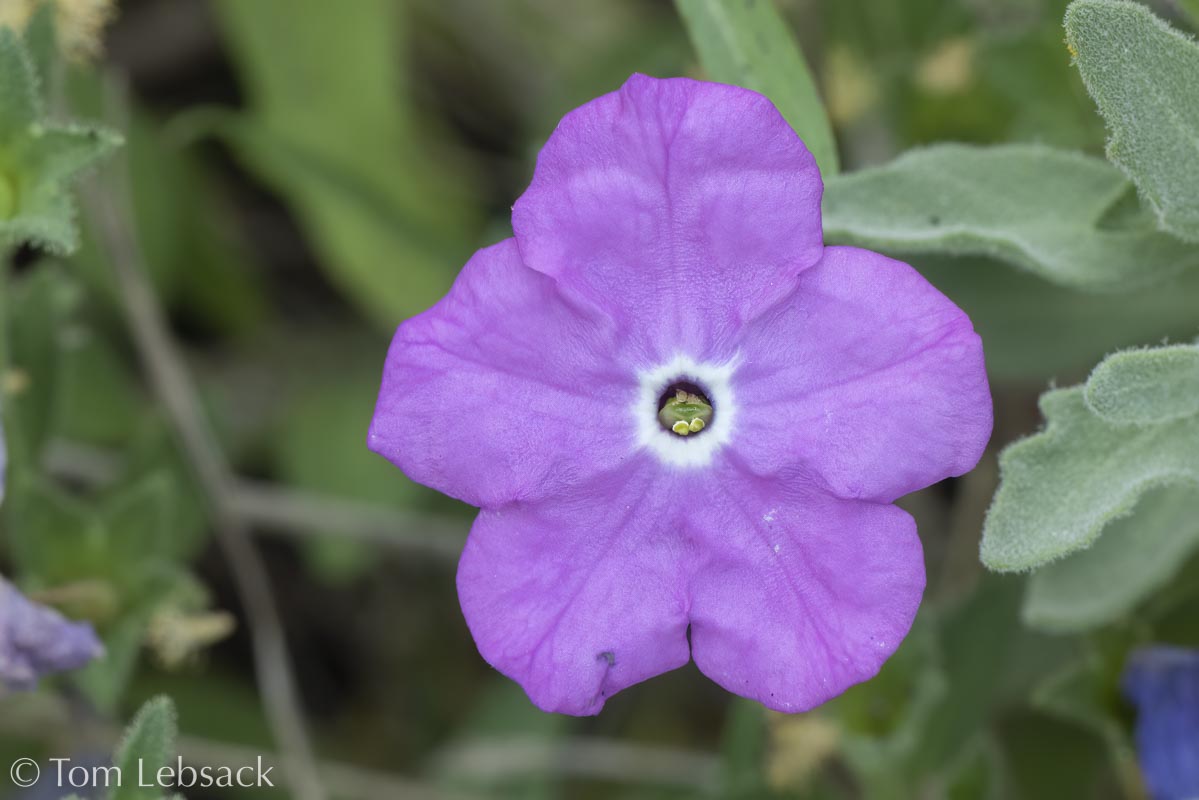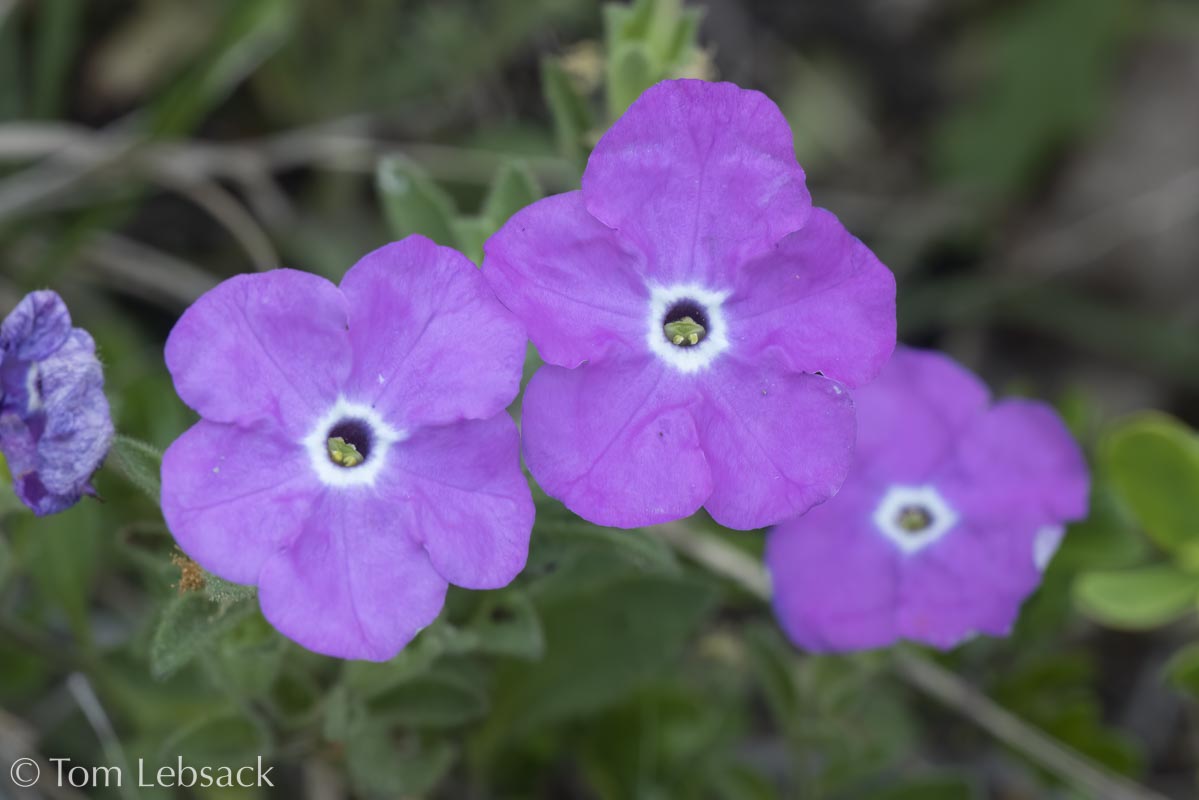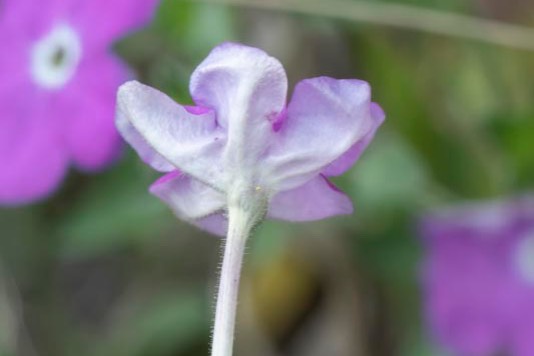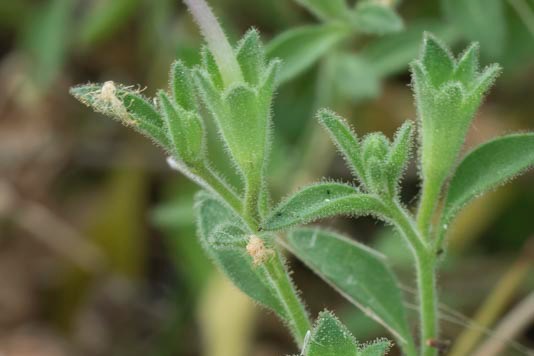Texas Wildbuds
Hunzikeria texana
(Texas Cupflower)
| Scientific Name | Hunzikeria texana (Leptoglossis texana) | USDA PLANTS Symbol | HUTE2 |
| Common Name | Texas Cupflower | ITIS Taxonomic Serial No. | 503066 |
| Family | Solanaceae (Nightshade) | SEINet Reference |
Click Here |
| Description | Habitat: Dry, rocky, limestone soils on hillsides and slopes; found in Val Verde, Edwards and Kinney counties and south into Mexico. Plant: Short, spreading perennial branching from base, up to 8 inches tall. Leaves: Alternate, obovate to oblanceolate blades 3/8 to 3/4 inches long and up to 1/3-inch wide on short petioles less than 1/5-inch long; margins entire and ciliate; surfaces covered with soft, glandular hairs. Inflorescence: Small, solitary or paired pink or light-purple phlox-like (salverform) blossoms with a white ring at the center, 3/4 to almost 1-inch or less across; 5 united, flared, rounded lobes with a relatively long (~1-inch or longer) floral tube densely-covered with short white pubescent hairs; 2 (of 4) yellowish anthers and greenish stigma visible in the narrowly-constricted throat; calyx below with 5 hairy, pointed triangular lobes. Bloom Period: May and June. References: "An Inventory of the Vascular Plants of the Amistad National Recreation Area, Val Verde Co., Texas" by Jackie M. Poole, and "A Preliminary Synopsis of Salpiglossis and other Cestreae (Solanaceae)" by W.G. D'Arcy. |
BONAP Distribution Map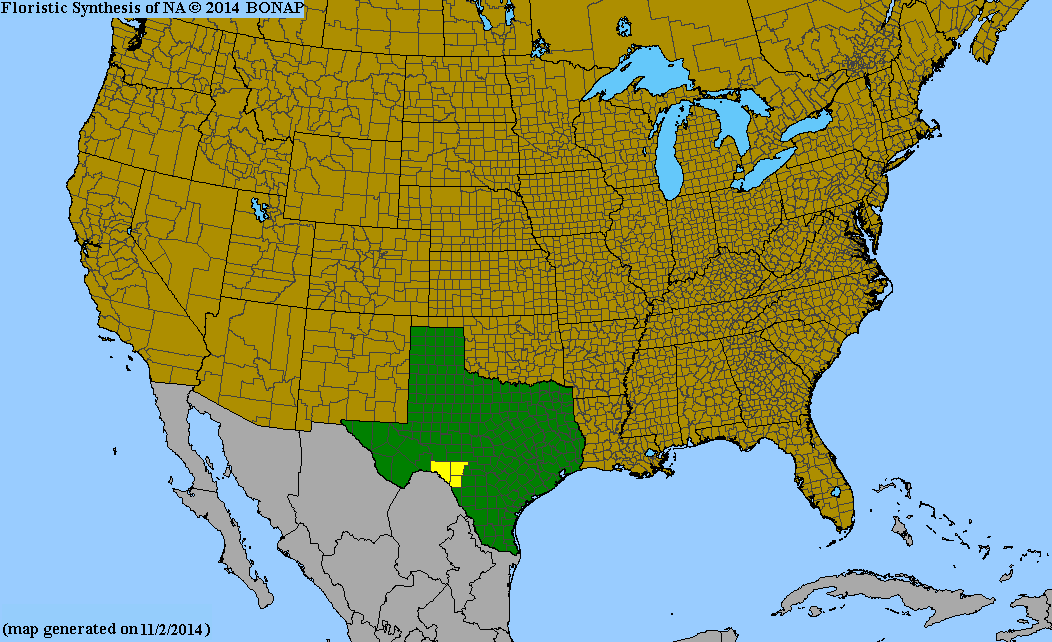 Map Color Key Map Color Key |
Texas Status: Native RARE |
Banner photo of Castilleja indivisa and Lupinus ssp. taken along FM 1323 north of Johnson City, Blanco County
© Tom Lebsack 2025
Every attempt is made to provide accurate, up-to-date, and relevant information, but the completeness or accuracy of any information presented on this website cannot be guaranteed. I use authoritative references to insure high standards of accuracy and review and update the information frequently.
